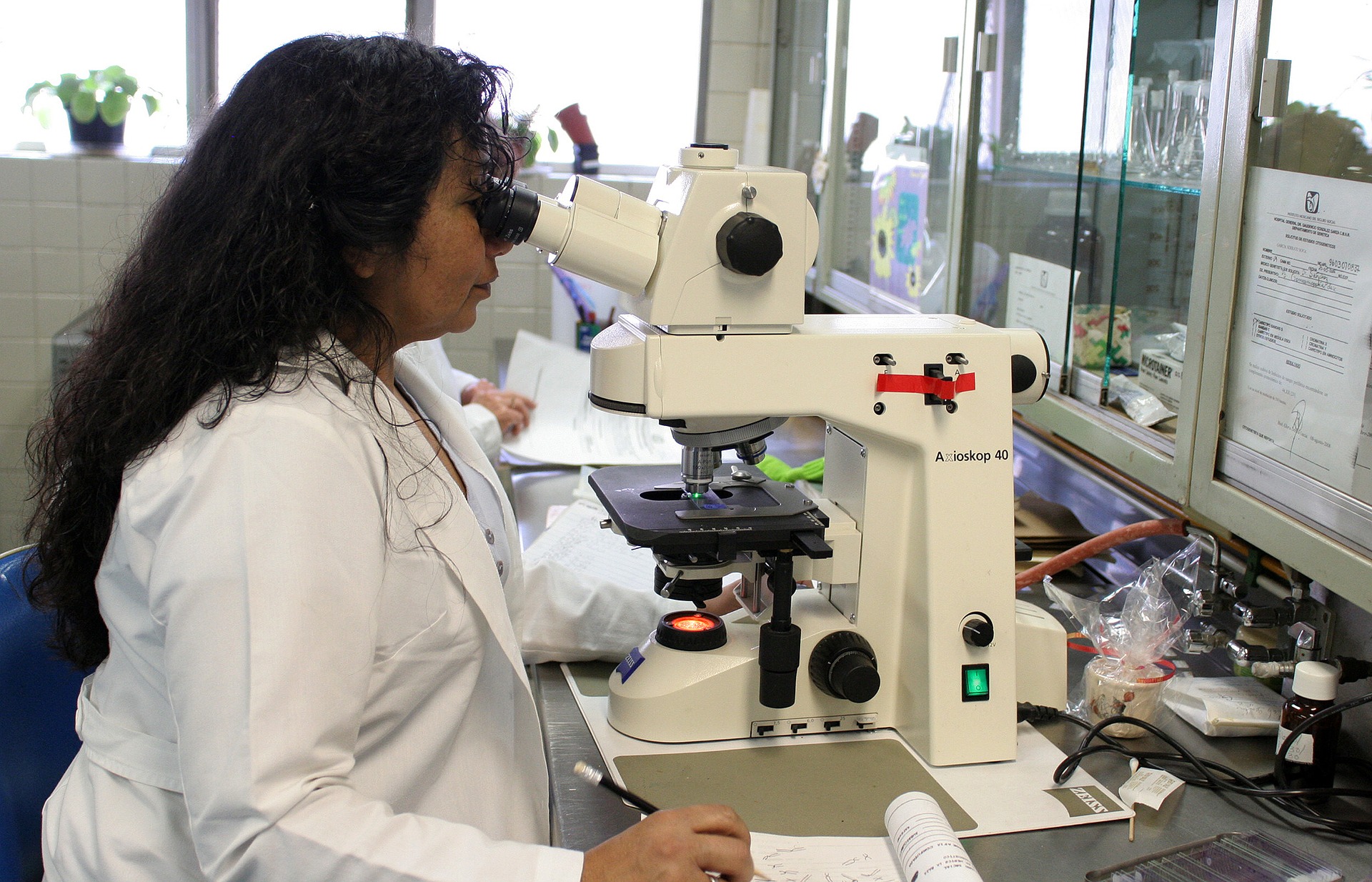STEM — the term used to encompass the disciplines of science, technology, engineering and mathematics — has long been dominated by men, a phenomenon many have attempted to explain by examining the obstacles women face in the field, so as to explain how certain barriers to the industry (e.g. reduced pay for female sexes, or increased marginalization and scrutiny) pose potential risks that thwart women’s involvement.
Women’s absence in STEM is a conundrum so massive that in recent years, increased calls for women’s participation have been made, but an analysis of women’s declining interest in STEM that doesn’t include an investigation into the relevance of past and present histories of racism and chauvinism within the scientific community is incomplete. I believe that factors such as fear of becoming a victim of racial discrimination, the omnipresence of the glass ceiling, and experiences of misogyny (or misogynoir) and sexism account for women’s diminished interest in or lack of presence within STEM.
Society has an unfortunate history of undervaluing women’s participation in the workforce, and this history is no different in STEM. Furthermore, lack of diverse representation, particularly Black female representation, lack of diversity and inclusion, and the absence of minority scientists, among other racial disparities, such as the fact that “leadership positions such as CEO or executive in the biotech industry are largely occupied by white professionals,” have contributed to the undervaluation of women’s work in the sciences, according to a report titled “Dismantling Systemic Racism in Science,” published in the Journal of Science by Esther A. Odekunle in 2020. As a result of systemic racism in science, a lot of minority women, particularly Black women, have had to fight for a seat at the table.
Gender inequality also creates unfavorable work circumstances by generating intense pressures upon women, demanding that they work harder for greater recognition and rewards. Women are called lazy for lacking ambition, then praised for having ambition, but are also denigrated for having too much ambition and wanting to be elevated in status and position as men are, without asking. Gender discrimination in the workplace, when compounded by a lack of diversity in hiring and promotion or a lack of interest in women’s contributions, creates gender bias about women’s capacities, leadership abilities and overall functionality in the sciences.
Women are then given less important responsibilities or offered menial labor opportunities, which create structural disadvantages. A common, prominent example of this is seen in the American wartime economy, when society suddenly recognized the need for women to participate in the economy and urged women to join the workforce.
Discrepancies in the assignment of work duties and obligations became clear, as, “for men, wartime work was often the foundation of long and successful careers, but for women it generally represented a short interlude before full-time domestic responsibilities,” and women’s work was often “unpaid, voluntary work,” or their work consisted of “part-time paid employment, but rarely a permanent post” since employers were reluctant to hire women, according to Sally Horrocks, in a 2019 article titled “The women who cracked science’s glass ceiling” that was published in a Journal of Nature.
When society devalues women’s participation because it conceives of women’s work as unimportant, the overall significance of women’s work experiences is also dismissed. This prompts organizations and business entities to overlook the value of women’s work. As a result, according to an article titled “The glass ceiling: Three reasons why it still exists and is hurting the economy,” published by the University of Chicago Booth School of Business in 2018, women often have to compete for higher positions within their occupations and negotiate higher pay, all the while being slighted for promotions rather than being considered for greater work opportunities.
Women’s erasure as a result of the glass ceiling actually hurts the economy, according to that very same article. On a more personal level, it affects the psychology of women who wish to join the labor force. Women internalize insecurity about their performance or abilities when their employers or bosses fail to consider their work vital or legitimate. Women’s confidence in their abilities improves when their work is legitimized by higher pay. An employer’s recognition or approval proves not only that they are deserving of a paycheck, but that their individual merit warrants notice and consideration.
When women either can’t find reputable, suitable work or can’t manage to find a place of work where their contributions are respected, they are often forced to choose between life or work, which leads to work-life disturbances that are related to their dilemma of choice. However, not all women face work-life balance issues stemming from the crisis of choice or insecurity. Sometimes they are able to barter for fair pay or protest for their voices and grievances to be heard. Additionally, sometimes, their efforts attract their employer’s attention and their grievances are actually considered and rectified.
Although women may be successful at campaigning for better income or higher-paying jobs, in general, the dismal fact that they often have to work and struggle for recognition, acknowledgment of the utility of their work, and fair compensation (fair pay) can be demoralizing and disheartening. It can cause them to abandon interest in STEM altogether.
It doesn’t help that, oftentimes, their work efforts are poorly reflected among hiring decisions, in spite of their hard work. Grahame Dowling, in a 2017 article titled “The glass ceiling: fact or a misguided metaphor?” that was published by the Journal of Annals in Social Responsibility, purported that, not only is women’s work performance understated, but, overall, women are far more underrepresented in senior positions in comparison to men. Essentially, promotions and gifts of seniority are endowed upon men far more than they are endowed upon women, whose contributions are often neglected — more proof of women’s adversity in STEM.
Employers’ tendency to diminish women’s labor and success means that the scientific community as a whole dismisses women’s gains and accomplishments in relation to their interests and acumen, or misrepresent the value of their work output. As a consequence, female scientists, such as female chemists working in Britain during the 1940s, are “not always able to find relevant work, even if they had impressive qualifications,” as Horrocks reports. This ultimately restricts women’s ability to shatter the glass ceiling, for women’s work is undervalued, under-compensated and underestimated when their productivity, capability and willingness to work is questioned. These factors account for women’s waning interest in STEM.
If women who plan on entering STEM feel as though their work contributions will be downplayed because their efficiency will be challenged and they won’t be taken as seriously as their male peers or promoted to the position of bosses, they might then become discouraged from STEM entirely. They might then consider other fields, such as government work or state-issued employment.
However, all hope is not yet lost. Women have made progress in STEM. According to Horrocks, opportunities for women have since expanded post-WWI — the majority of which have been obtained through legislation. In the United Kingdom, for example, laws were passed that stipulated: “From 1960, women who worked for the state received the same wages as men. For women, this made careers in government research and universities more attractive than those in industry, in which differential pay rates and benefits remained the norm.” That being said, these advances are still so abysmal that many women feel they will experience greater success elsewhere, therefore abandoning the pursuit of careers in STEM.
The disparity between female scientists and male scientists extends beyond the pay gap — the issue can largely be explained by the influence of patriarchal culture, where sexism and misogyny are rampant and commonplace. Female scientists often work under the expectation that they will somehow soon quit their place of employment in favor of being a housewife or in the event of pregnancy. Historically, marriage has affected women’s upward career mobility, for, as Horrocks reports, women were “limited by an expectation that they would resign from work once they married” and “their involvement in professional research was curtailed by powerful male influences.” They essentially felt like they had to choose between having a career or settling down into marriage and family life.
Furthermore, women, as a minority, weren’t seen as economic assets. Working women were subject to business practices that penalized them because of their gender identity. Many, as a result of the imbalances of power they faced, felt that if they individually failed to pursue relevant research experience in the field, they would “fail for all women,” a sentiment Horrocks shares. A hostile workplace culture, in addition to male-oriented norms, patriarchal dominance, and the influence of marriage and family dynamics only exacerbated this feeling.
Moreover, the scientific career opportunities available to female scientists following World War I were obscured by the forces of prejudice and bigotry, even when they did find their work intellectually satisfying, for they were constantly subject to indignities in work positions since their work environment placed them in humiliating or degrading situations.
In addition to this mistreatment, Horrocks found that women were denied “maternity-leave legislation or a provision for childcare,” hence why opportunities for female scientists didn’t truly explode until after World War II, when jobs in the biological sciences, for instance, became available to female researchers.
Nonetheless, she articulates that up until this point, “female researchers who pursued scientific careers during the post-war period faced emotional and practical challenges in the predominantly male environments,” among other obstacles to mobility, and they “had to come up with strategies to improve their status without seeming to be openly confrontational.” Otherwise, they would be labeled unprofessional or unsatisfactory employee candidates. As a consequence, they experienced self-doubt. All of these factors help explain the dwindling number of female scientists and mathematicians; women are deterred from pursuing STEM as a viable career path.
















